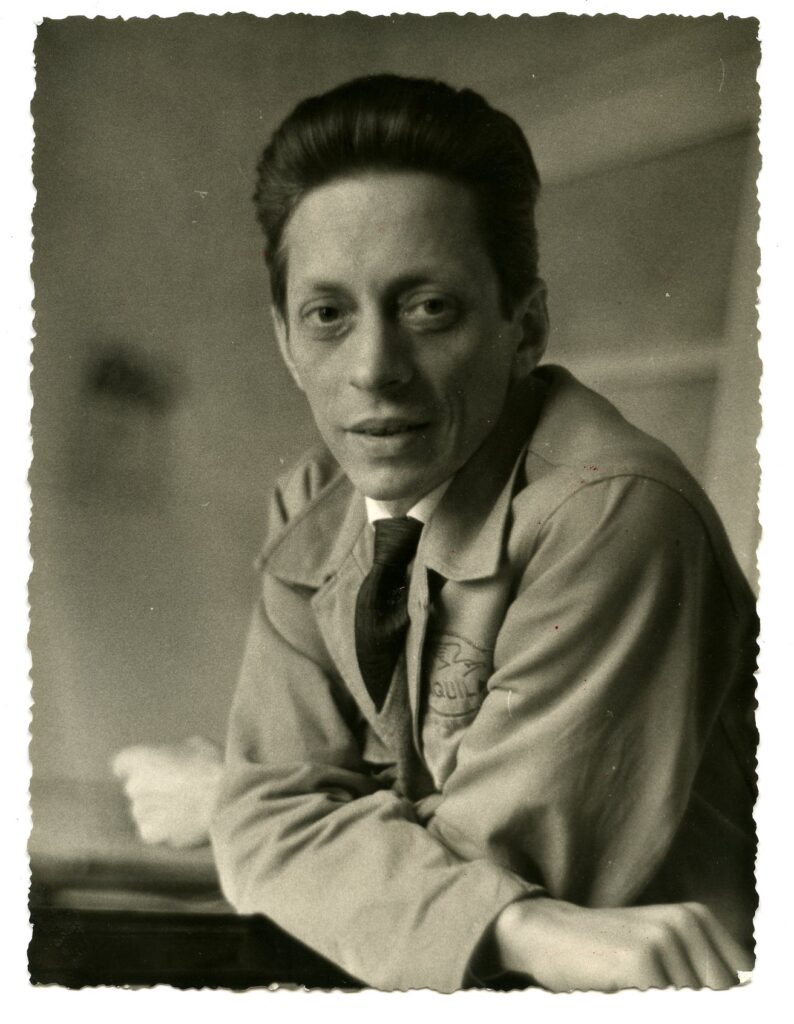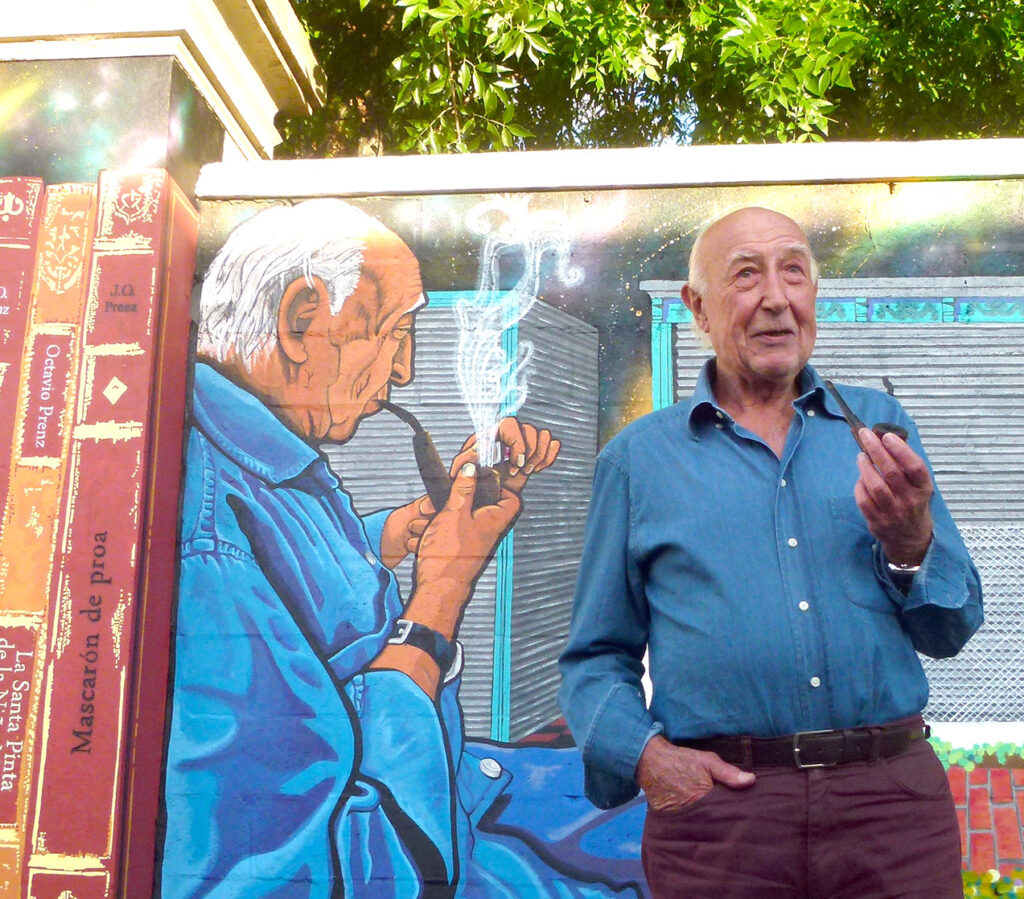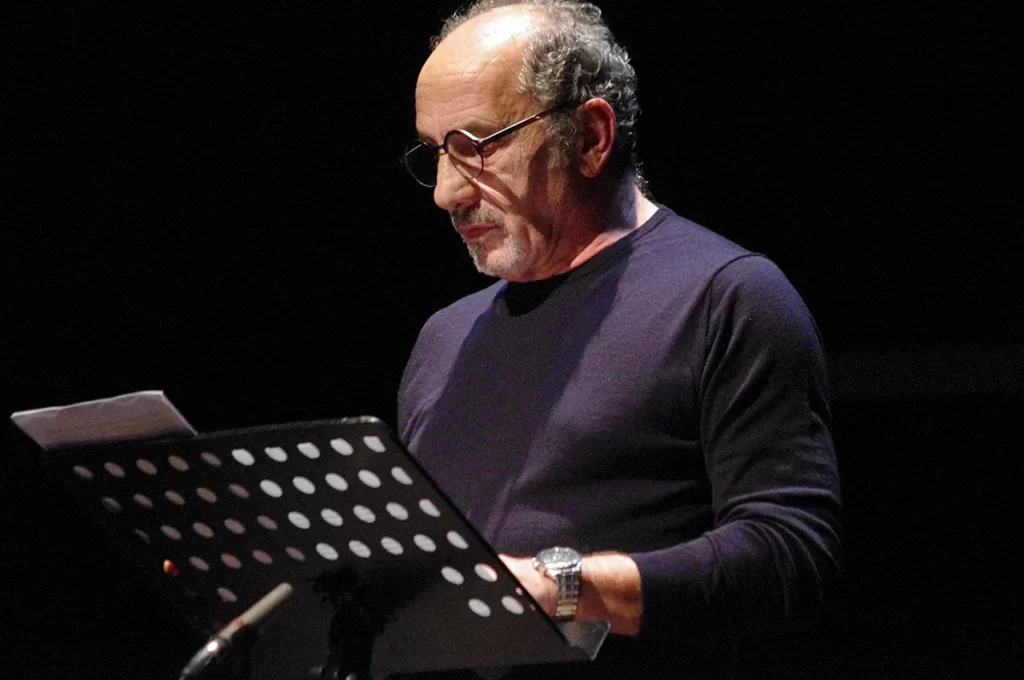Stelio Mattioni
Storia di Stelio, raffinato in raffineria, sognatore di personaggi di fumo
Born a poet (La città perduta, 1956), it is almost natural that Mattioni, who loved and frequented the literary Trieste of his era, decided to write a biography of Saba upon the latter’s death. In 1960, during the first collection of materials and testimonies for the Storia di Umberto Saba (which only came out thirty years later, in 1989, testifying to the difficulty of the undertaking) he met Bobi Bazlen. This was the beginning of a long friendship and his career as a storyteller.

After the stories gathered in Il sosia (1962) published by Einaudi, Mattioni published a series of novels with Adelphi – which continued to follow Bazlen’s intuitions. These include Il cuore di Alma (1980), a finalist for the Campiello prize. Mattioni’s life was divided between writing and his employment at the L’Aquila refinery, which he entered even before having served the army in Africa, an experience that gave the substance to the 1984 novel Dove.
By now a protagonist of the cultural life of Trieste, between 1981 and 1985 he was director of the local broadcaster Tele4, wrote for the state broadcaster RAI and for the dialect theatre company L’Armonia. Upon his death he left many unpublished works, some published recently, such as Tululù (which in dialect means a simple, naive person) was published in 2002 by Adelphi, followed in 2009 by Memorie di un fumatore In recent years, Saba’s biography has also been republished.
Middle world
Between the Andes and the Karst, high and low, prose and verse, featuring the Middle World of a suspended generation
Juan Octavio Prenz
The son of Istrian émigrés to Argentina, with the rise of the military dictatorship and the impossibility of freely expressing democratic ideas, in 1975 he returned to Belgrade, where he had already taught at the university in the 1960s, and then to Trieste. He always wrote in Spanish and obtained international recognition which led to him meeting poets and writers such as Borges, Neruda, and Andrić. In Trieste, in particular, he became friends with Claudio Magris.
Believing in interculturality – so much so that he was among the promoters of a Trieste university course with this title, in his novels he satirizes the risks of modernity and conformism, including La favola di Innocenzo Onesto decapitato (1990) showing how to combat the serious social problem of laughter and Il Signor Krek (2006) on how to guarantee security but at the expense of freedom. His last, emblematic work was entitled Solo gli alberi hanno radici (2013).
If Fabio Doplicher (1938-2003) defined himself as “a traveler between the tunnels inside us and the paths of fireflies and stars”, the “rebels” Ennio Emili (1937-1993) and Paolo Universo (1934-2002) express themselves in rhythms with a nihilistic and protesting streak, also explored with irony by Ugo Pierri (b. 1937), an “unpublished painter, a twilight poet, writer of short stories not in vogue”.
Pino Roveredo
A vital but also painful and sometimes ferocious humanity was the protagonist of his narrative and his life. The son of deaf-mute parents, he went through a turbulent youth, marked by alcohol and prison, only to emerge with a courageous pen in his hand and the desire to help. His lightning-fast narrative debut Capriole in salita (1996) imposed his very particular nominal style which bore its ripest fruits in the stories of Mandami a dire which won the 2005 Campiello prize.




